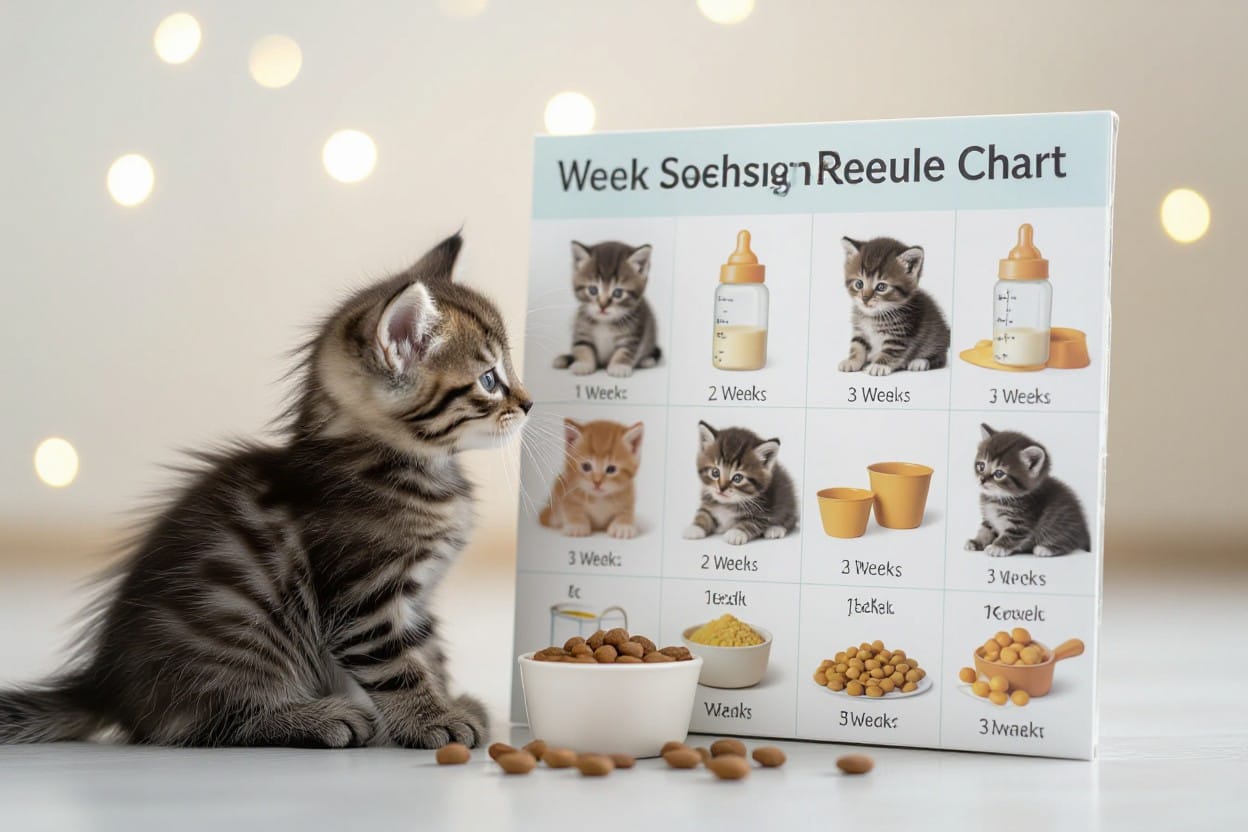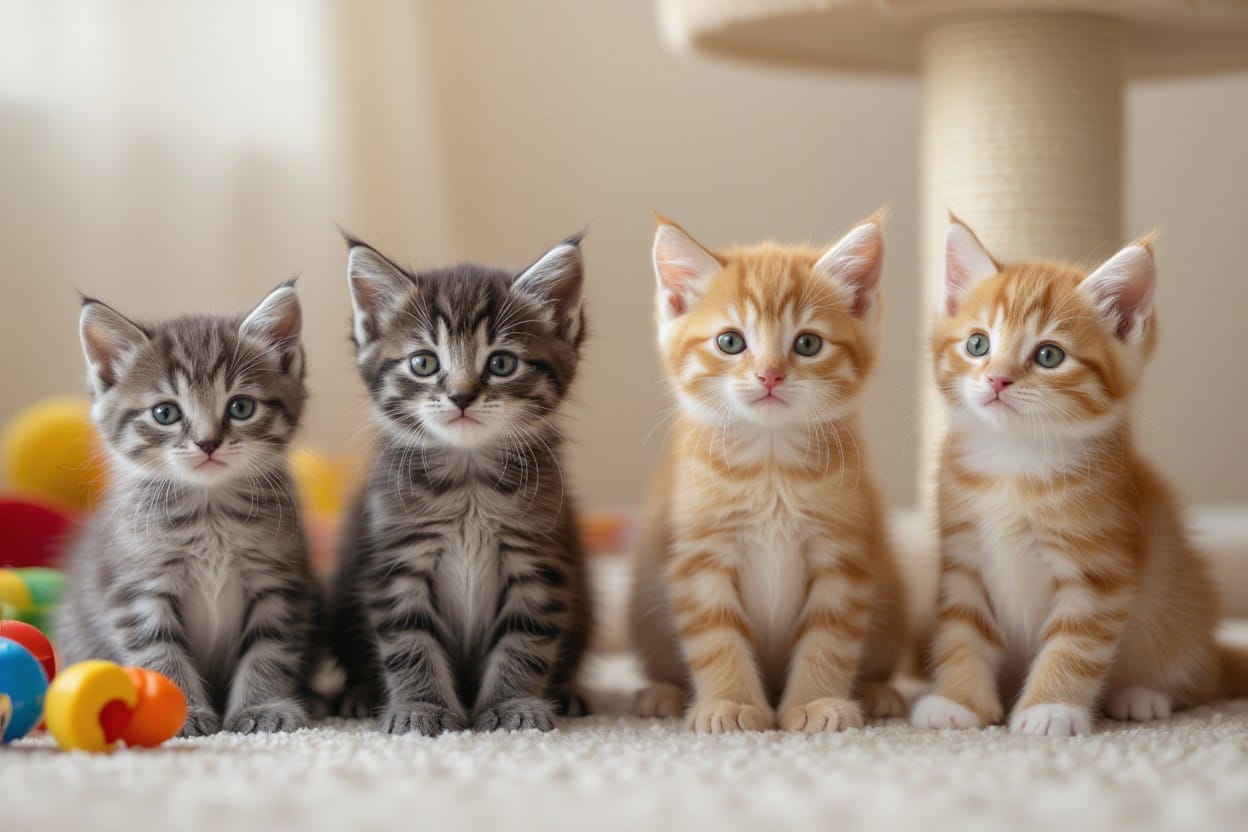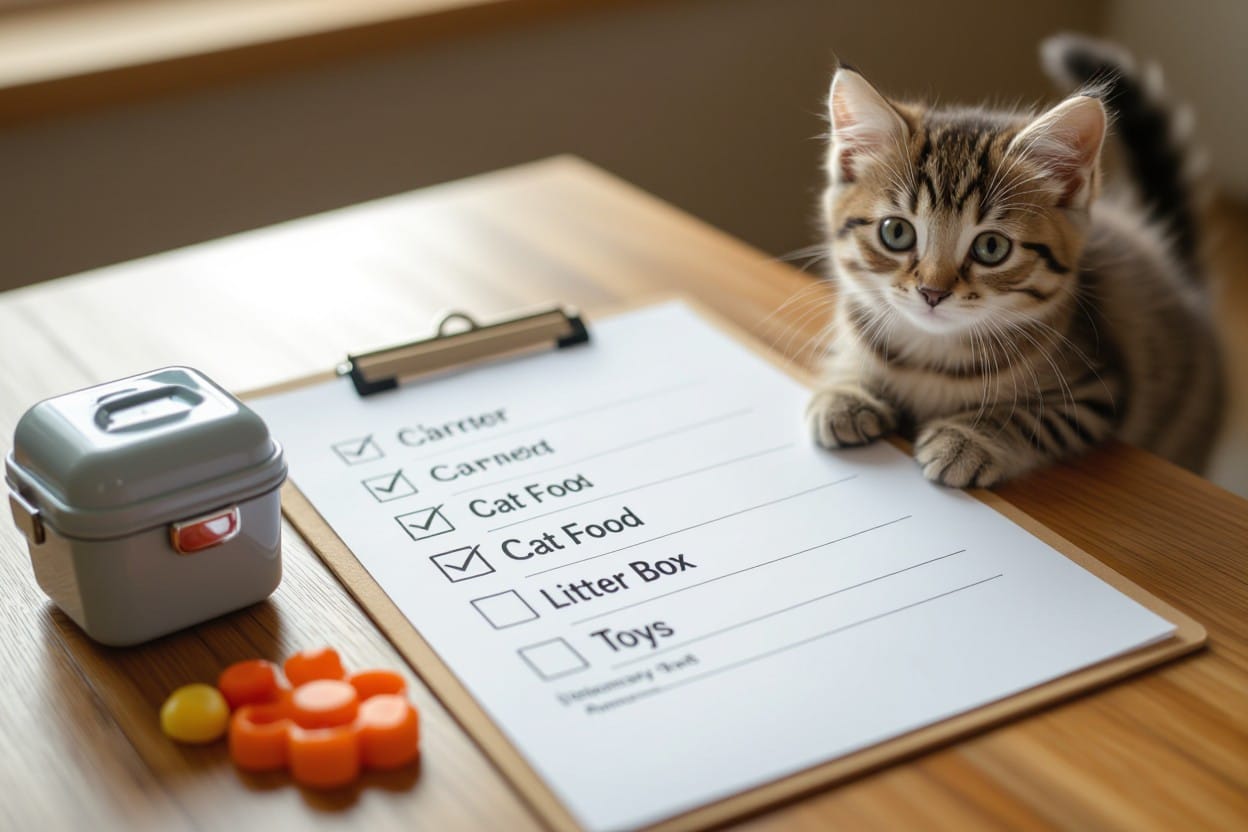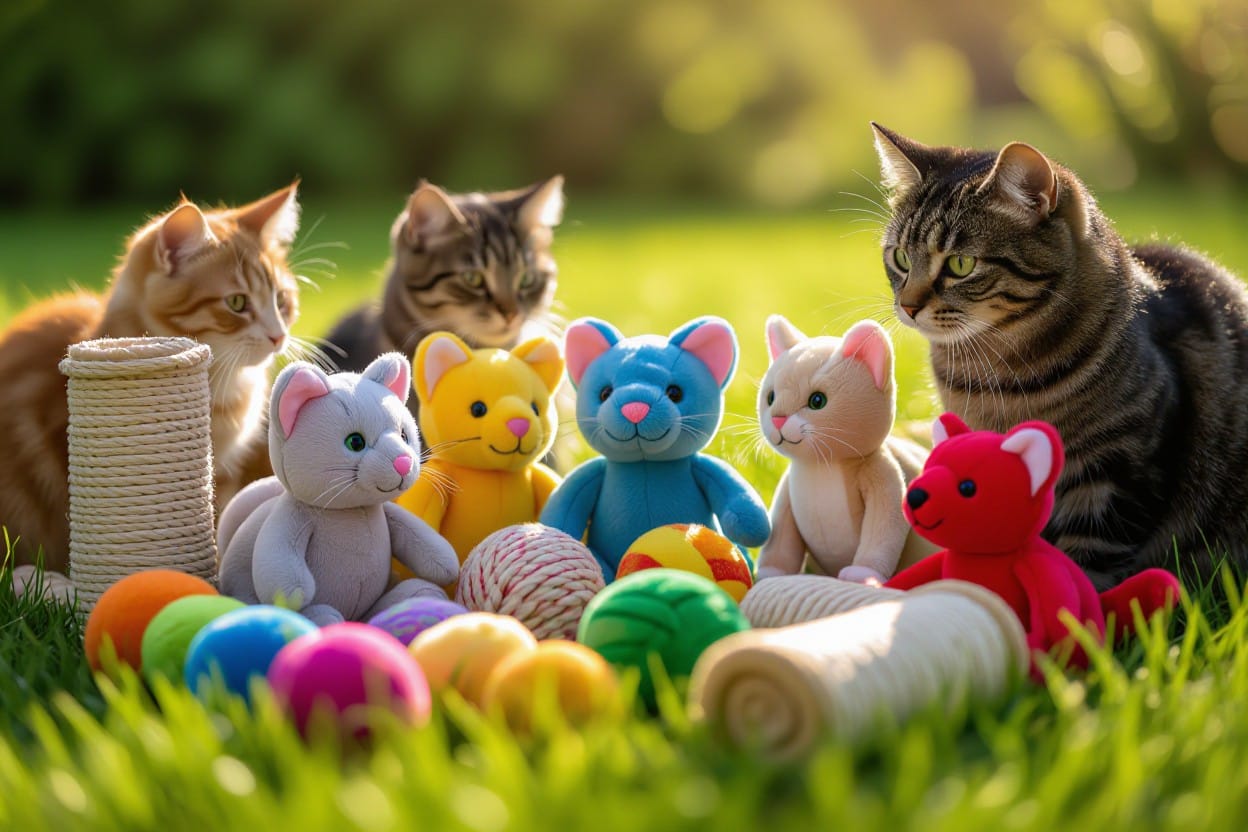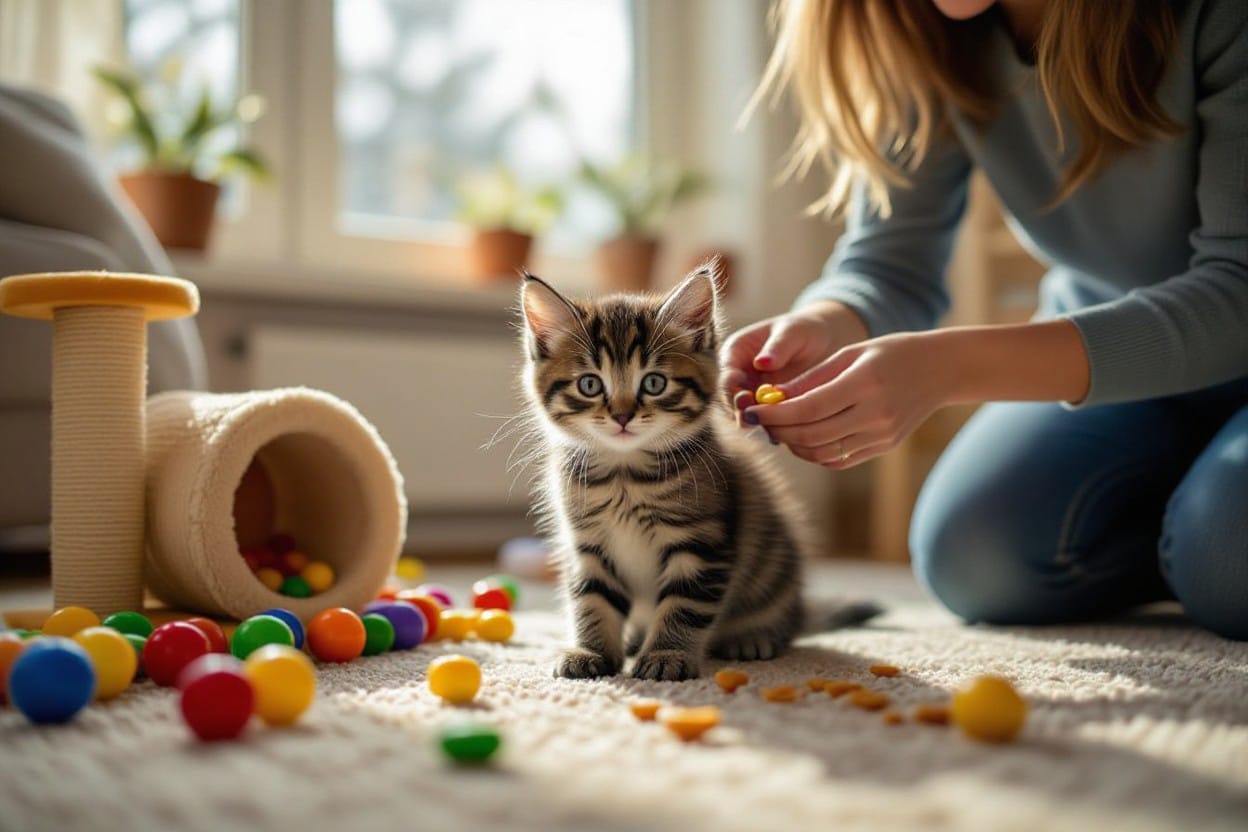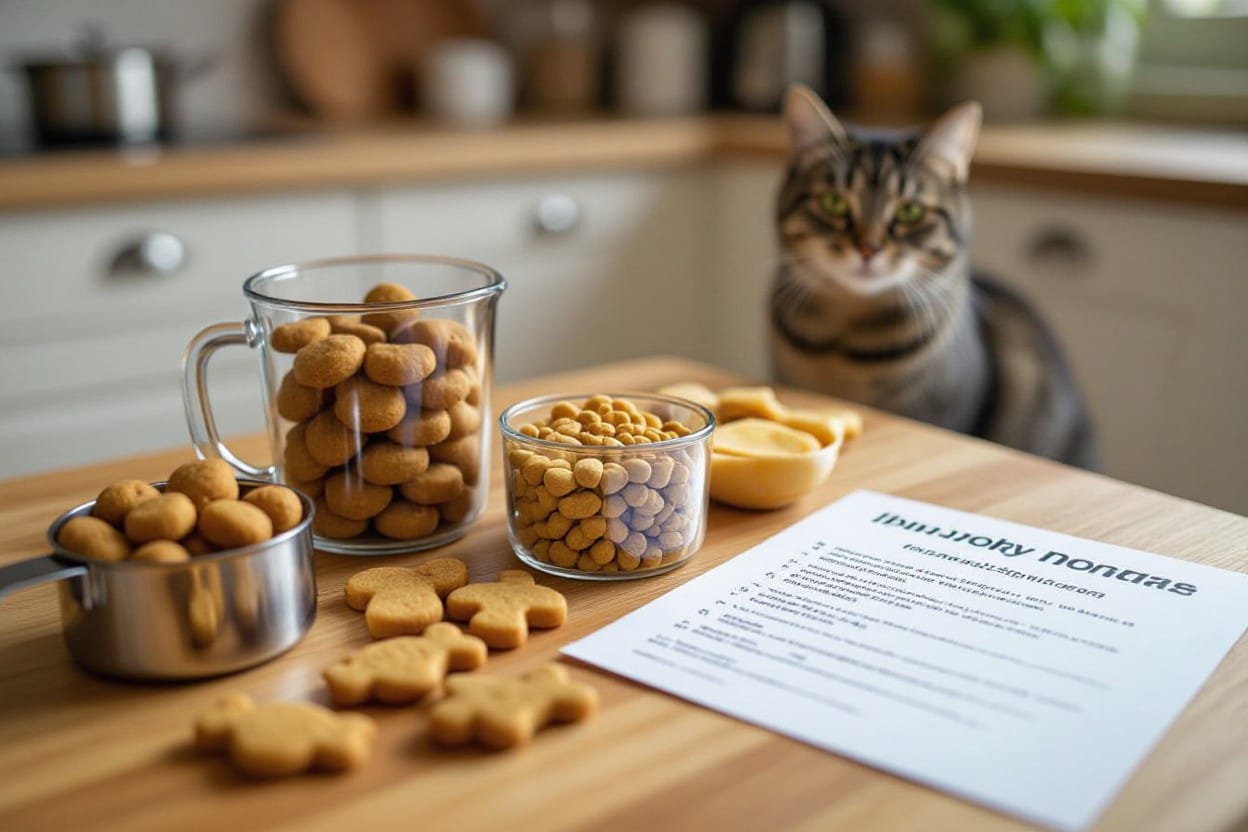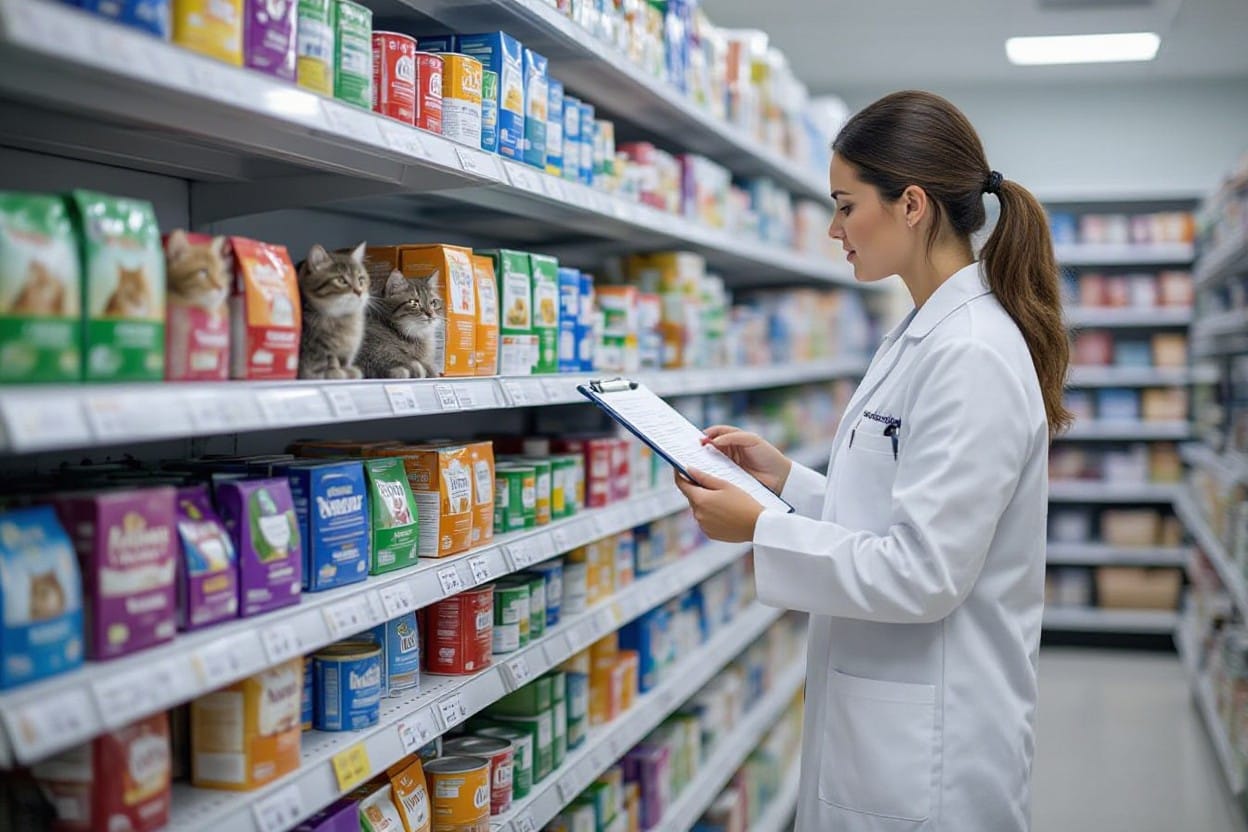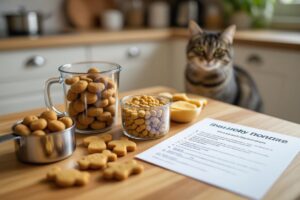kitten feeding schedule by age gives you a clear, week-by-week plan so you know when to feed kittens, how to follow a kitten milk replacer schedule in early weeks and progress through the weaning kittens timeline; you will track amounts by age and weight, avoid danger signs like dehydration, hypothermia, or failure to gain weight, and adjust frequency for stages such as how often feed 4 week old kitten to ensure healthy growth.
Key Takeaways:
- Kitten feeding schedule by age — 0–4 weeks (kitten milk replacer schedule): feed formula every 2–3 hours for newborns, 3–4 hours by 2 weeks, adjusting volume by body weight per product guidelines.
- Weaning kittens timeline — 4–8 weeks: introduce wet-food gruel around 4 weeks; how often feed 4 week old kitten: offer 4–6 small meals/day while tapering formula.
- By 8+ weeks transition to solid kitten food; when to feed kittens: 3–4 meals/day by 8–12 weeks and adjust portions using kitten feeding amounts by weight to support steady growth.
Understanding Kitten Nutrition
Importance of Nutrition in Early Development
Proper nutrition in the first weeks directly determines immune function, organ development, and brain growth; kittens typically double their birth weight within 7–10 days and should gain roughly 10–20 g per day thereafter. You’ll use the kitten feeding schedule by age to meet those needs: newborns on a kitten milk replacer schedule require feeds every 2–3 hours, while by 3–4 weeks you begin introducing gruel to support digestive maturation and the weaning kittens timeline.
Specific deficits cause immediate risks—low blood sugar and dehydration can develop within 24 hours of missed feeds—while longer-term protein and calorie shortfalls stunt skeletal and neurological growth. You should monitor weight daily, follow formula manufacturer charts for volumes, and adjust feeding frequency to keep weight on the expected curve rather than guessing volumes.
Energy Needs and Growth Rates
Growing kittens require substantially more calories per kilogram than adult cats, often about 2–3 times adult maintenance on a per-kg basis during peak growth. For practical planning, use weight-based feeding guidelines on formula and starter food labels and track gains: if a kitten isn’t hitting the target of ~10–20 g/day, increase volume or frequency rather than switching diets abruptly.
At 4 weeks, you’ll shift from a strict kitten milk replacer schedule toward mixed feeding—offer moistened canned food or gruel and continue formula; how often feed 4 week old kitten typically means every 4–6 hours (about 4–6 times per day), combining small meals of solidized food with periodic formula to maintain energy. When deciding amounts, consult kitten feeding amounts by weight on packaging and adjust based on daily weight trends.
Examples help: a 300 g neonate that gains 10–20 g/day is progressing normally, whereas flat weight or loss over 48 hours signals you to increase feeds or seek veterinary care. You should aim for steady upward trends rather than sporadic large meals that can cause digestive upset.
Common Feeding Mistakes to Avoid
Using cow’s milk, diluting or concentrating commercial formula incorrectly, and feeding a kitten on its back with a syringe or bottle all lead to problems—cow’s milk often causes severe diarrhea, incorrect dilution alters electrolytes, and improper position risks aspiration pneumonia. You must follow mixing instructions exactly, warm formula to near body temperature (about 37°C), and hold the kitten belly-down during bottle feeds.
Avoid free-feeding adult dry food too early and skipping weight checks; offering adult maintenance food reduces protein/fat available for growth, and irregular monitoring masks feeding failures. Use a log to record times, volumes, and weights so you can spot trends early and adjust the kitten feeding schedule by age instead of guessing.
Practical fixes include weighing kittens at the same time each day, using the manufacturer’s volume chart for the kitten milk replacer schedule, and slowing the weaning kittens timeline if a kitten stalls—gradual transition over 1–2 weeks prevents refusals and digestive upset.
The Critical First Two Weeks
The Role of Mother’s Milk
Colostrum in the first 24–48 hours delivers the bulk of passive immunity; antibodies and growth factors in mother’s milk reduce the risk of infection and help stabilize blood sugar. Newborns will nurse on demand, typically every 1–2 hours during day and night in week one, so your observation of frequent nursing and warm, contented kittens is a reliable sign that the kitten feeding schedule by age is on track.
Weight gain provides the clearest metric of success: most healthy kittens gain roughly 10–20 grams per day and often double birth weight by 7–10 days. If you see stalled gain, repeated crying, or a cold, limp kitten, those are indicators of insufficient milk intake and immediate action is required to avoid hypoglycemia and dehydration.
Alternatives for Orphaned Kittens
Use a commercial kitten milk replacer (KMR)</strong); do not give cow’s milk because its protein and lactose profile commonly causes diarrhea and electrolyte imbalance. Follow the product’s mixing and warming instructions—aim for body temperature (about 38–39°C / 100–102°F)—and adhere to a kitten milk replacer schedule of feeding every 2–3 hours for newborns. A typical practice is to consult the label for “kitten feeding amounts by weight” and then confirm volumes by daily weight checks.
Bottle feeding with a small, soft-nipple bottle mimics nursing: hold the kitten upright or slightly inclined, allow a slow drip so the kitten actively latches, and burp after feeding. Tube feeding is sometimes required for weak or uncooperative neonates; that method carries a higher aspiration pneumonia risk and should be performed only by someone trained or under veterinary instruction.
Sanitation and preparation matter: sterilize bottles and nipples between uses, discard refrigerated mixed formula older than 24 hours, and keep a written feeding log with weights and volumes so you can accurately report the kitten’s status to your vet if you see poor weight gain or diarrhea.
Feeding Frequency and Volume
Expect to feed newborns every 2–3 hours around the clock during the first two weeks; even brief gaps can lead to hypoglycemia in very small kittens. Practical examples: a very small kitten under ~100 g may take only 2–4 ml per feeding at day 1–3, increasing toward 5–10 ml per feeding by the end of week two. Use the when to feed kittens rhythm—frequent, small feedings—rather than fewer large ones.
Adjust volumes based on daily weighing and the product’s guidance for “kitten feeding amounts by weight.” If a kitten consistently refuses a normal volume, shows aspirated formula (coughing, nasal discharge), or fails to gain ~10–20 g/day, reduce the single-feed volume and increase frequency, and contact your veterinarian.
Keep a strict schedule and log: weigh kittens at the same time each day, record grams gained, and compare against the expected weaning kittens timeline so you can transition to less frequent feedings and starter gruel at the appropriate age without compromising growth.
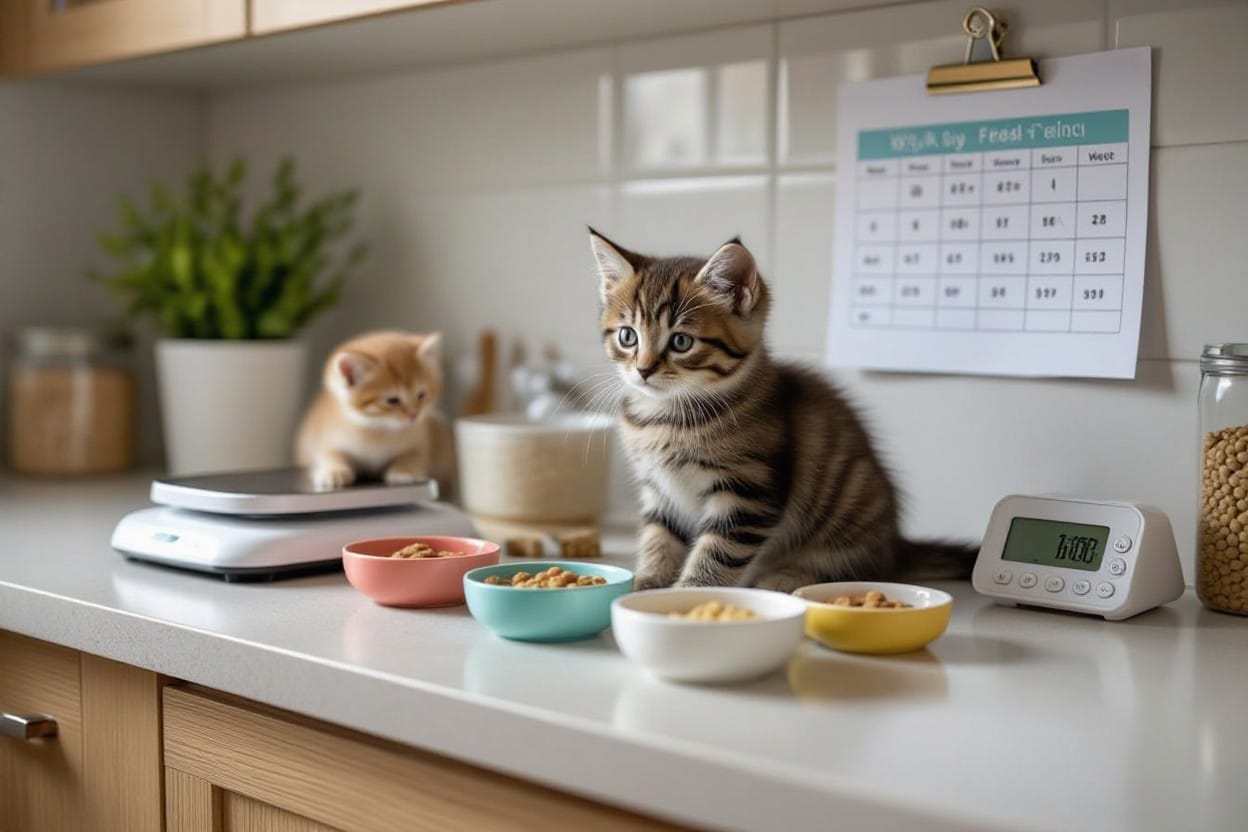
Weeks 3-4: Transition to Solid Food
Gradual Introduction of Gruel
Start by mixing canned kitten food with warm kitten milk replacer at about a 3:1 to 4:1 ratio (milk replacer to canned food), yielding a thin, creamy gruel the consistency of heavy cream. Offer a shallow dish and put 1–2 teaspoons (5–10 ml) on your fingertip to encourage licking; present gruel 3–4 times per day while continuing the kitten milk replacer schedule so your kitten still gets necessary calories and hydration.
Over 7–14 days thicken the mixture gradually—move to a 1:1 ratio, then to mostly canned food mashed with a little water or replacer. Watch for aspiration risk if the gruel is too runny or the kitten coughs while eating, and avoid giving cow’s milk entirely; follow the weaning kittens timeline by reducing replacer as solid intake increases.
Feeding Schedule Adjustments
Shift from the newborn rhythm to longer intervals: offer bottle or syringe feeds according to your kitten milk replacer schedule but begin spacing feeds to every 4–6 hours during the day while giving gruel 3–6 times daily. If asking how often feed 4 week old kitten, plan on combined feed opportunities—formula every 4–6 hours with gruel offered between or alongside—to keep total calories steady.
Track weight daily and aim for steady gains of about 10–20 grams per day; if weight gain stalls, increase replacer volume or frequency rather than pushing solids too fast. Example routine: week 3 — milk replacer 5–6 times/day + gruel 3 times/day; week 4 — milk replacer 4–5 times/day + gruel 4–6 times/day, offering slightly larger portions as appetite rises.
Monitor stool consistency and hydration closely when adjusting volumes: loose, watery stools often mean the gruel is too rich or given too frequently, while small, hard stools can indicate insufficient fluid intake—adjust kitten feeding amounts by weight and consult your vet if you see persistent vomiting, diarrhea, or no weight gain.
Litter Training Considerations
Introduce a low-sided litter box with 2–3 cm of non-clumping, unscented litter in a quiet, accessible spot; place your kitten in the box immediately after feeding sessions and naps to build the association between eating and elimination. Use a shallow dish or pie pan early on so your kitten can easily step in and out, and mimic the mother’s behavior by gently scratching the litter with their paw to show the motion.
Linking toileting opportunities to your kitten feeding schedule by age accelerates learning—take your kitten to the box about 10–20 minutes after gruel or formula, and expect several accidents at first. Clean accidents with an enzyme cleaner and avoid punishment; most kittens begin using the box consistently within 1–2 weeks if you consistently place them after meals.
Keep the box cleaned daily and switch to a slightly deeper tray as your kitten grows; avoid clumping litter until your kitten reliably uses the box to prevent ingestion hazards, and use the feeding routine to cue litter box visits so you control both nutrition and elimination training together.
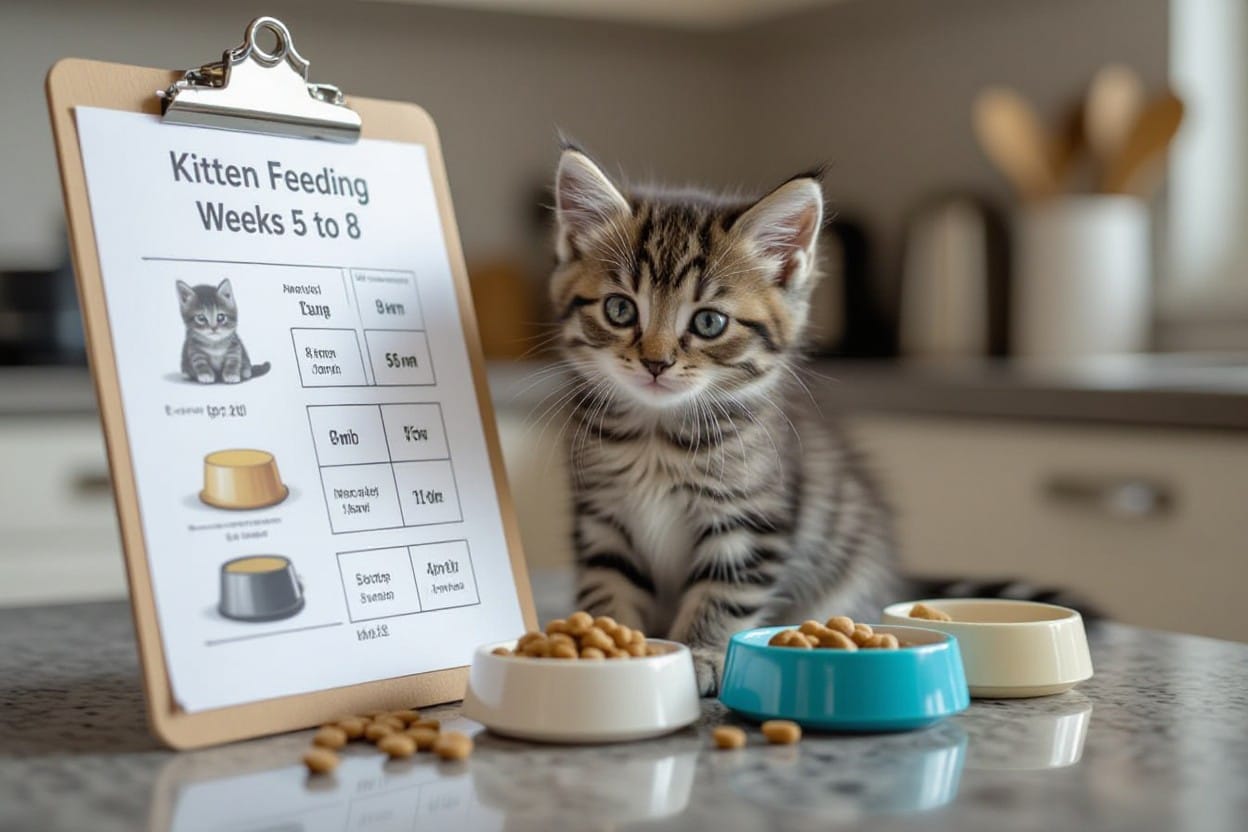
Weeks 5-8: Weaning Process
Increasing Solid Food Proportions
By week 5 shift the gruel ratio toward solids so that solids make up roughly 50–75% of each meal; mix canned kitten food with just a splash of kitten milk replacer (KMR) or warm water to form a thick pate, then gradually reduce the liquid over 7–14 days. Aim to offer solids 4 times per day at consistent intervals—morning, midday, late afternoon and evening—so your kitten learns a regular routine within the broader kitten feeding schedule by age.
Move to mostly canned food by week 6–7 and to fully solid meals by week 8 as part of the standard weaning kittens timeline; continue a kitten milk replacer schedule only for kittens that are small, slow to gain, or still seeking milk at night. If your kitten refuses solids, try warming the food to body temperature and presenting small spoonfuls—most kittens accept pate-style canned food before dry kibble.
Type of Food for Growth
Select diets specifically labeled for growth or “kitten” and prioritize high-protein, calorie-dense wet food—look for products with roughly 30–40% protein and 18–25% fat (on an as-fed basis or per manufacturer analysis). Pate-style canned food and softened kibble mixed into moistened canned food provide both the texture kittens handle best and the hydration they need; avoid cow’s milk and human baby formula, and use only a commercial kitten milk replacer if needed.
For transitioning to dry kibble, soak small amounts of high-quality kitten kibble in warm water for a few minutes until it softens; over 1–2 weeks reduce soaking time so your kitten learns to crunch kibble. Offer fresh water at every meal and prioritize wet food if your kitten is under 900 g or not drinking reliably.
Typical kitten feeding amounts by weight vary, but you can use meal-size examples for planning: a 500–900 g kitten often eats about 1–2 tablespoons per meal of canned food at 4 meals per day; follow package feeding charts and adjust based on steady weight gain rather than fixed volumes.
Indicators of Independence
Look for steady, measurable signs that your kitten is weaning: consistent weight gain on a growth chart (generally a few grams per day at this stage), eating all offered meals without coaxing, and reliably drinking water. Litter-box use, active play, and the ability to lap or chew without gagging are practical markers you can observe at home that indicate progress along the weaning kittens timeline.
Decrease night-time KMR offerings once your kitten finishes full daytime meals and sleeps through longer stretches; most kittens are consistently self-feeding and comfortable on 3–4 meals per day by week 7–8. If your kitten still seeks milk multiple times nightly, continue small KMR supplements and monitor weight closely.
Failure to gain weight, persistent diarrhea, or lethargy are danger signs that require veterinary attention; weigh your kitten twice weekly and consult your vet if weight stalls or your kitten remains unable to eat independently by 8 weeks.
Months 3-6: Growth Stage
Caloric Needs and Feeding Frequency
Growth accelerates between 3 and 6 months, so plan on roughly 2–3 times the adult resting energy requirement (RER) to estimate daily calories; RER = 70 × (bodyweight in kg)^0.75. For example, a 1.5 kg kitten has an RER of about 95 kcal, so target approximately 190–285 kcal per day during this phase. Feedings should be broken into multiple meals—start with 3–4 meals daily at 3 months and transition toward 2–3 meals by 6 months as you monitor appetite and activity.
Split the total daily calories evenly across meals (e.g., 3 meals = ~33% per meal) and account for calorie density differences: canned kitten food often runs lower per gram than kibble, so weigh portions or use manufacturer kcal/100 g data. Watch for rapid weight loss, lethargy, or refusal to eat as dangerous signs that require immediate veterinary attention; conversely, steady gains and playful energy are positive indicators your “kitten feeding schedule by age” plan is working.
Introducing Variety in Diet
Transition new diets slowly over 7–10 days using a staged mix: start with 25% new food and 75% current diet for 2–3 days, move to 50/50 for the next 2–3 days, then 75/25 before switching completely. Offer both high-quality wet and dry kitten formulas labeled for growth—rotate proteins (chicken, turkey, fish) every few weeks to broaden palates and reduce food aversions during the weaning kittens timeline.
Adding variety helps with hydration and dental exposure to different textures; include a majority of complete kitten-formulated meals and limit treats to no more than 10% of daily calories. Keep adult-maintenance formulas off the menu until around 12 months to avoid nutrient gaps and excess calories that can lead to early obesity.
Practical example: if you introduce a new canned kitten food, measure by weight or kcal—mix ~25 g of the new canned food into the current portion to reach the 25% stage, then increase each stage while watching stool consistency and appetite; adjust the pace of change if you see diarrhea or refusal to eat.
Monitoring Growth and Adjusting Portions
Weigh your kitten weekly on a consistent scale and plot gains against a growth curve or your veterinary clinic’s chart; aim for steady upward trend rather than abrupt jumps. Use a simple body condition score (BCS) check—ribs should be palpable with a thin fat covering and a visible waist from above—so you can pair weight data with body composition, not just mass.
If growth stalls, increase daily intake by about 10–15% and recheck weight in 3–7 days; if the kitten is gaining too rapidly or becoming round in profile, reduce portions by 10% and reassess. Keep notes of “kitten feeding amounts by weight” (calories per kg or grams per meal) so you can make precise, incremental changes and discuss trends with your vet.
Example adjustment: a 12-week-old kitten at 1.2 kg not gaining over a week may benefit from an extra 10–20% of its current meal sizes (roughly one additional small wet-meal scoop or an extra tablespoon of kibble per day), then reweigh after 3–5 days and continue small changes until the growth curve resumes.
Months 6-12: Maturation Phase
Adjusting Meal Frequency
By 6 months you can typically move from four small feeds to 3 meals per day, then shift to 2 meals per day between 9–12 months as growth tapers; this follows the kitten feeding schedule by age that reduces meal frequency while preserving lean growth. Weigh your kitten every 1–2 weeks and track body condition—if weight gain stalls or your kitten looks thin, keep three meals a day for a few more weeks or increase portion size by 5–10% rather than increasing frequency.
Avoid free-feeding dry food during this phase because it commonly leads to overeating; instead, divide the daily recommended amount from the food label into scheduled portions and offer at set times. Keep in mind that overfeeding leads to obesity, so use measured scoops or a kitchen scale and adjust portions based on weekly weight trends and a target body condition score.
Transitioning to Adult Food
Most cats are ready to move off kitten formulas around 9–12 months, though larger breeds (Maine Coon) may benefit from kitten nutrients until 12–18 months; follow the weaning kittens timeline in reverse by gradually reducing kitten food. Implement a 7–10 day transition plan: days 1–3 mix 25% adult/75% kitten, days 4–6 mix 50/50, days 7–9 mix 75/25, and complete the switch on day 10 while monitoring stool and appetite.
Select an adult diet matched to activity and neuter status—indoor, neutered cats typically need lower-calorie maintenance formulas than intact or very active cats. Stop the switch and consult your vet if you observe persistent diarrhea, vomiting, or marked appetite loss during the transition.
Additional detail: choose wet or dry based on hydration and dental needs—add wet food to increase water intake (helpful if your kitten drinks little), and use dry kibbles sparingly or as measured meals; if you feed mixed textures, keep the same method during the transition and adjust total daily calories so treats and extras remain <10% of daily intake.
Establishing Lifelong Healthy Eating Habits
Set consistent meal times and portion control now so your adult cat learns structure—feed twice daily in the long term and avoid table scraps that disrupt balanced nutrition. Train family members to follow the plan, and introduce puzzle feeders or food-dispensing toys to encourage natural foraging behavior and slow consumption during meals.
Monitor weight and body condition monthly and aim for a BCS of 4–5 on a 1–9 scale; adjust daily calories by about 5–10% if weight trends upward or downward over a 2–4 week period. Use the kitten feeding amounts by weight on the food label as a starting point, then personalize portions based on activity, neuter status, and observed body condition.
More info: in multi-cat homes, prevent resource guarding and over- or under-feeding by using separate feeding stations or microchip-activated feeders that open only for the intended cat; consistent routines plus periodic weigh-ins are the most reliable way to maintain a healthy adult weight after finishing the kitten feeding schedule by age.
Feeding Problem Solutions
Addressing Common Eating Issues
If a kitten refuses the bottle or solid food, check the kitten milk replacer schedule and the temperature first — aim for about 100–102°F (38–39°C) for formula and test flow from the nipple so milk drips steadily but not too fast. For newborns, resume feeding every 2–3 hours; if a 2–3 week old kitten refuses for more than 12 hours or loses >10% body weight in 24–48 hours, contact your vet because dehydration and hypoglycemia can become life-threatening quickly.
Diarrhea after a formula change often signals dilution errors or lactose intolerance; mix powdered replacer exactly per label and avoid cow’s milk. Weigh the kitten daily and expect roughly 10–15 g of gain per day in the first weeks; sustained lack of gain or sunken eyes, tacky gums, or decreased skin turgor are red flags that need immediate assessment.
Managing Special Circumstances
When you care for orphaned, ill, or low-birth-weight kittens, consider syringe feeding or orogastric tube feeding if the kitten can’t latch — tube feeding can deliver accurate volumes but carries an aspiration risk if placed incorrectly. A commonly used guideline for compromised neonates is roughly 20–30 ml per 100 g per 24 hours divided into frequent small feeds, and you should keep the nest temperature between 85–90°F for the first week to support digestion and energy use.
Preterm or low-weight kittens will need more frequent monitoring and may require higher-calorie formulas or supplements; follow the weaning kittens timeline more slowly, extending bottle feeds and introducing gruel around 4–5 weeks only when the kitten consistently gains weight. If respiratory effort is increased or feeding causes coughing, stop feeding and seek veterinary help because pulmonary aspiration or underlying infections can worsen rapidly.
More detail: observe a practical example — a 120 g orphan that fails to gain at least 8–12 g/day after 48 hours should be evaluated; you can safely syringe-feed 3–4 ml every 2 hours while arranging veterinary support, and log every feeding and weight to adjust volumes according to the kitten feeding amounts by weight.
Emergency Feeding Tips
If a kitten is hypothermic or limp, warm it first (use a heating pad set low with a towel barrier or a warm water bottle) before offering food; feeding a cold kitten dramatically increases the risk of aspiration and should be avoided. For an unresponsive or seizuring kitten, do not attempt oral feeding — transport immediately to an emergency clinic.
When you run out of commercial replacer and cannot reach immediate help, use a short-term alternative: warmed human infant formula (soy-free) can be used for no more than 24 hours while you obtain proper kitten milk replacer, and always feed small volumes frequently (every 2–3 hours for neonates). Avoid plain cow’s milk and dilute formulas without veterinary guidance because they often cause diarrhea and electrolyte imbalance.
- kitten feeding schedule by age
- when to feed kittens
- kitten milk replacer schedule
- weaning kittens timeline
- how often feed 4 week old kitten
- kitten feeding amounts by weight
More info: in true emergencies, prioritize warmth and hydration — offer tiny syringe boluses of warmed, diluted glucose solution (0.5–1 ml) only if the kitten is alert and can swallow, and transport to a vet for fluids and dextrose if hypoglycemic signs persist. Weight trends and hydration status guide whether you escalate to tube feeding or IV therapy. Assume that prompt veterinary care is the safest course of action.
Nutritional Requirements by Age
Essential Nutrients for Growth
Growth demands a diet significantly richer in protein, fat, and certain micronutrients than adult maintenance food. Aim for kitten formulas or commercial growth diets that deliver roughly 30–40% protein and 20–30% fat on a dry-matter basis, with adequate levels of taurine and DHA to support cardiac, retinal, and brain development. Maintain a calcium-to-phosphorus ratio near 1:1 to 1.5:1 to prevent developmental bone problems; excess calcium from inappropriate supplements can cause permanent skeletal deformities.
Energy needs are high during rapid growth: between about 2 and 6 months many kittens require roughly 200–260 kcal per kg of body weight per day, tapering as growth slows. Neonates and very young kittens rely on a proper kitten milk replacer; cow’s milk lacks sufficient fat and taurine and can cause malabsorption and diarrhea, so do not give cow’s milk. Use commercial replacer formulations labeled for orphaned kittens and follow manufacturer dosing closely.
Age-Specific Dietary Needs
0–4 weeks: follow the kitten milk replacer schedule from earlier sections—feed every 2–3 hours for newborns, shifting to longer intervals as they reach 2–3 weeks. You’ll want a replacer formulated for kittens with high fat and protein; warming to body temperature and feeding in small, frequent volumes prevents hypoglycemia and aspiration. How often feed 4 week old kitten: at around 4 weeks you can reduce formula feedings to about every 4–6 hours while beginning to offer a gruel of replacer mixed with canned kitten food.
4–8 weeks (weaning kittens timeline): increase the proportion of canned or moistened dry kitten food over 1–2 weeks. Offer small meals 4–6 times per day at 4–6 weeks, then move toward 3–4 meals daily by 8–12 weeks. For practical portions, consult the product feeding chart and monitor weight rather than rigidly following volume charts; a healthy 600 g (0.6 kg) 6–8 week kitten might consume roughly 120–160 kcal/day split across meals, adjusted to steady weight gain.
Gradual texture changes work best: start with a 1:3 replacer-to-wet-food gruel and tighten the ratio over several days. Watch for soft stools or refusal, reduce the transition speed if diarrhoea appears, and keep fresh water available as you introduce dry kibble.
Monitoring Nutritional Balance
Weigh kittens daily during the first two weeks and at least weekly thereafter; a reliable benchmark is doubling birth weight by 7–10 days and then gaining roughly 10–20 g per day during early growth phases. Track a weight curve for each kitten and adjust volumes or meal frequency if gains plateau. Consistent weight charts let you answer “when to feed kittens” and how much by weight instead of guessing.
Watch clinical signs for imbalance: dull coat, lethargy, persistent diarrhoea, or stunted growth signal inadequate nutrition or intolerance. Excessive supplementation (especially calcium or vitamin D) can be as harmful as deficiency, producing limb deformities or renal stress. Seek veterinary assessment for any failure to thrive or prolonged gastrointestinal loss.
Use product-specific feeding guides as starting points, then fine-tune by weight and stool quality; if a kitten falls below expected gains (less than ~5–10% bodyweight increase in a week for very young kittens), increase intake or consult your vet for formula concentration changes, alternative replacers, or metabolic evaluation.
Interactive Tools for Kitten Care
Feeding Calculators and Their Importance
Feeding calculators convert your kitten’s current weight and age into precise feed volumes and frequency, so you can follow a reliable kitten feeding schedule by age instead of guessing. Entering weight in grams and age in weeks commonly returns ml per feeding, total ml per 24 hours, and a kcal/day estimate; many calculators will recommend tighter intervals for neonates (every 2–3 hours) and fewer feedings as you approach the weaning kittens timeline. Use calculators to generate a suggested kitten milk replacer schedule when you’re bottle‑feeding — they prevent both underfeeding (which risks hypoglycemia) and overfeeding (which can cause aspiration or diarrhea).
Practical example: a basic calculator might tell you to offer smaller, more frequent feeds for a 200–350 g neonate, then shift to larger, less frequent amounts by 3–4 weeks as you begin gruel introductions. Watch for red flags the tools highlight — weight loss, failure to gain ~10–15 g/day, or drops in feed volume — and contact your vet if those appear.
Scheduling Tools for Feeding Routine
Smartphone apps and shared calendars make following the “when to feed kittens” rhythm manageable across caregivers. Apps that log time, amount, and type of feed let you audit patterns and spot missed feeds; set recurring alarms for newborns (every 2–3 hours) and adjust reminders to every 4–6 hours as you approach 4 weeks, answering the common question of how often feed 4 week old kitten. For multi-person households, a synced checklist prevents missed bottleings and shows who fed what and when.
Automated feeders can help older kittens during the weaning kittens timeline (usually after 6–8 weeks), but avoid relying on them for neonates: automated portions may be too large and lack the manual support a young kitten needs. Choose apps that export logs so you can show your vet clear evidence of feed volumes, frequency, and trends during checkups.
To implement a schedule quickly, create blocks: 0–2 weeks = every 2–3 hours (8–12 feeds/day); 2–4 weeks = every 3–4 hours (6–8 feeds/day); 4 weeks onward = 4–6 feeds/day while introducing wet food. Pair those blocks with persistent alarms and a single shared log (app or cloud spreadsheet) to ensure consistency.
Growth Tracking Resources
Weight charts and growth-tracking apps let you compare your kitten’s progress to expected milestones — for example, many kittens should double birth weight by about 7–10 days and gain roughly 10–15 g/day in the first weeks. Use a kitchen or gram-accurate digital scale, weigh at the same time each day, and plot points; sudden plateaus or losses flagged by the chart indicate you should revisit the kitten feeding amounts by weight and possibly the kitten milk replacer schedule.
Some resources include built‑in alerts (e.g., notify if three-day average falls below target) and community datasets so you can compare to breed- or litter-specific norms. Veterinary clinics often provide printable percentile charts and will interpret patterns you bring from an app export.
For DIY tracking, use a simple spreadsheet with columns for date, time, weight (g), amount fed (ml), and notes (stool, energy level). Weigh before the first morning feed, record consistently, and flag any daily gain under 5–7 g for neonates or any weight loss as items requiring veterinary attention.
The Role of Hydration
Importance of Providing Water
During the first 0–4 weeks of your kitten feeding schedule by age, most hydration comes from queen’s milk or a kitten milk replacer schedule; by 3–4 weeks you should start offering fresh water alongside gruel and wet food. Canned food contains roughly 70–78% moisture</strong), while dry kibble is closer to 5–10% moisture, so a kitten eating mainly dry food needs noticeably more free water. Aim for an approximate daily total water intake of 50–75 ml per kg of body weight as a guideline — a 500 g (0.5 kg) kitten would therefore need about 25–38 ml/day from all sources combined.
Proper hydration supports digestion, temperature regulation and the transition on your weaning kittens timeline; if you reduce milk replacer too quickly without increasing wet food or water, dehydration risk rises. If you see rapid weight loss or reduced nursing/appetite while following when to feed kittens and the weaning plan, increase accessible water and consult your veterinarian, since dehydration can progress quickly in kittens.
Hydration Signs in Kittens
Watch for reduced skin elasticity (skin tenting), tacky or dry gums, sunken eyes, decreased urine output and lethargy — these are common indicators that your kitten may be underhydrated. Veterinarians often classify dehydration roughly as 5% (mild), 6–8% (moderate), and ≥10% (severe) bodyweight loss; even a 5% drop in a tiny kitten can be significant. A capillary refill time longer than about 2 seconds and a weak, rapid pulse are additional red flags.
Perform simple at-home checks: gently lift the scruff or pinch the skin over the shoulder blade for a quick skin-tent test (not always reliable in neonates), press a finger on the gum to evaluate moisture and capillary refill, and track urine frequency—very young kittens should still be producing urine daily, stimulated by the queen or by you if orphaned. Any combination of these signs alongside weight loss should prompt fluid support and vet evaluation.
More info: if a 4-week-old kitten on a weaning schedule shows tacky gums and has lost 7% bodyweight over 24–48 hours, offer small syringed amounts of kitten milk replacer or water (a few milliliters at a time), monitor weight every 12–24 hours, and contact your veterinarian; subcutaneous fluids or clinic rehydration may be required for moderate to severe cases.
Best Practices for Encouraging Water Intake
Provide multiple shallow, wide bowls of fresh water in areas where kittens eat and play, change water at least twice daily, and use ceramic or stainless bowls (plastic can retain odors). Introduce a pet fountain if you notice reluctance to drink—many kittens and adult cats prefer running water and fountains have been shown to increase voluntary intake. Start offering water by 3–4 weeks as you follow the kitten feeding schedule by age and the kitten milk replacer schedule, and ensure wet food or gruel is available during the weaning kittens timeline to boost intake.
Add water to canned food to create a gruel during early weaning, gradually thinning the milk replacer schedule as the kitten shifts to solid foods; try 1–2 tablespoons of water per 1/4 cup of canned food initially. Place bowls away from litter boxes, keep them on the floor at kitten height, and offer shallow saucers (about 2–3 cm depth) so tiny kittens can lap without inhaling liquid. Monitoring total intake against the 50–75 ml/kg/day guideline helps you decide whether to increase accessible water or switch to higher-moisture wet diets.
More info: for a litter of three, place at least three water stations in separate spots to reduce competition, clean bowls daily to prevent bacterial growth, and keep water at room temperature—very cold water can deter some kittens while slightly warm (not hot) gruel is often more attractive during weaning.
Socialization and Feeding Behavior
The Impact of Socialization on Eating
Between about 2 and 7 weeks of age kittens go through the primary socialization window; exposure to calm handling, different foods, and varied feeding locations during this period makes you far more likely to stick to a predictable kitten feeding schedule by age without fight. Kittens handled for short sessions (5–10 minutes, 3–4 times a day) are more likely to accept new textures and human presence at mealtime, which directly answers the question of when to feed kittens in multi-person households: feed at consistent times and keep interactions positive so they learn to eat in your presence.
Fear periods often peak around 7–9 weeks and again near 12 weeks, during which a kitten may hide or refuse food; expect appetite dips and watch weight closely. If a kitten refuses to eat for more than 24 hours or shows >10% body weight loss, seek veterinary care immediately, because dehydration and rapid weight loss are the most dangerous outcomes of stress-related anorexia.
Feeding Group Dynamics in Multiple Kitten Homes
Competition at the bowl commonly shapes intake: dominant kittens can monopolize food while shy ones take fewer calories. Set up at least one feeding station per kitten plus one extra, and place bowls in separate corners or rooms during meals so each kitten can access food without interruption; this reduces stress and helps you track individual intake for kitten feeding amounts by weight.
Timed group feedings historically work well: for example, offer wet food 4–6 times daily for 4-week-old kittens (addressing the question “how often feed 4 week old kitten”) and reduce to 3–4 meals by 8–12 weeks as the weaning kittens timeline progresses. Use shallow bowls, watch for bullying, and weigh kittens every 2–3 days—if one kitten falls behind by more than 5–10% compared to littermates, provide separate supervised feedings.
Practical setup: label bowls, rotate placement so shy kittens get early access, and consider temporary partitioning or brief one-on-one feeding sessions for underweight kittens; these measures prevent long-term deficits and make monitoring when to feed kittens and how much they eat far simpler.
Learning from Mother Cats’ Feeding Habits
Mother cats teach timing and technique: nursing frequency in the first 3–4 weeks is high (every 1–2 hours for neonates), then she gradually spaces feedings as kittens approach 4–6 weeks and introduces solids. You can mirror that pattern—if you’re following a kitten milk replacer schedule, move from bottle feeds every 2–3 hours in the first week to more spaced feedings and small gruel meals around 3–4 weeks to ease the transition.
Behavioral imitation is powerful: kittens watch mom lap, bite, and select morsels, so present soft, warmed gruel near her eating area to speed weaning. Aim for roughly 3–4% of body weight per day in solid food as a starting guideline during transition—so a 500 g kitten would need about 15–20 g of wet food daily split across multiple meals—then adjust based on growth and appetite.
If the mother is absent, simulate her schedule by offering small, frequent meals and social feeding cues such as calm voices and gentle stroking; matching her rhythm reduces stress, supports steady weight gain, and helps you maintain an effective kitten feeding schedule by age.
Special Dietary Needs and Considerations
Kittens with Health Issues
Illnesses like diarrhea, upper respiratory infections, congenital cardiac defects, or premature birth will change your timeline for the standard kitten feeding schedule by age; sick neonates often need feeding every 2–3 hours with warmed formula and careful monitoring rather than the usual 3–4 hour intervals. Watch for signs of hypoglycemia (lethargy, tremors) and dehydration (sunken eyes, tacky gums)</strong); both require immediate veterinary attention and may mandate syringe feeding, subcutaneous fluids, or an orogastric tube to safely maintain calories while you address the underlying problem.
Anthelmintic treatment, targeted antibiotics, or appetite stimulants can change how and when to feed kittens—coordinate dosing times with meals so you don’t exacerbate vomiting or reduce absorption. Track weight daily and aim for the typical neonatal gain of roughly 10–15 g per day; failure to gain or any drop in weight is a red flag that your feeding plan and the standard weaning kittens timeline need veterinary reassessment.
Nutritional Needs for Spayed/Neutered Kittens
Metabolic shifts after spay/neuter tend to lower energy requirements, so you should tighten portion control to avoid rapid fat accumulation while still supporting growth. Continue following the kitten feeding schedule by age for meal frequency—measured meals 3–4 times per day—while using higher-protein, controlled-calorie kitten formulas; weekly weighing helps you adjust volumes based on kitten feeding amounts by weight instead of free-choice feeding which often leads to excess intake.
Post-anesthesia feeding generally resumes once your kitten is alert and able to swallow—often within 12–24 hours—starting with small, frequent meals to reduce nausea and the risk of aspiration. If your veterinarian recommends a transition diet after surgery, follow their prescription exactly and reduce total daily calories gradually while maintaining protein to support lean tissue growth; preventing early obesity will protect joints and metabolic health as the kitten matures.
For longer-term management, monitor body condition score monthly and adjust daily portions by weight changes: if your kitten trends above the normal growth curve on your scale or gains more than ~15–20 g/day consistently after 12 weeks, cut portions slightly and reassess—this practical approach pairs the weaning kittens timeline and your routine of when to feed kittens with active weight management.
Formulating Diets for Rare Conditions
Specific disorders such as portosystemic shunts, congenital renal dysplasia, exocrine pancreatic insufficiency, or severe food allergies demand tailored macronutrient and micronutrient profiles; for example, you may need a highly digestible, low-protein prescription for a portosystemic shunt or a low-fat formula for recurrent pancreatitis. Use commercially available therapeutic diets when possible and follow the manufacturer’s feeding guidelines adjusted to kitten feeding amounts by weight under veterinary supervision.
When a prescription diet is unavailable or a homemade diet is considered, work with a board-certified veterinary nutritionist to create a formula that provides exact caloric density and vital amino acids, vitamins and minerals for growth—home-cooked recipes without professional oversight risk critical deficiencies or imbalances. Keep regular lab monitoring (CBC, chemistry, specific disease markers) and clinical checks to ensure the diet corrects clinical signs without creating secondary problems.
Establish a stepwise plan: confirm the diagnosis, start the therapeutic diet as a controlled trial, record daily intake and weight, and adjust calories and macronutrients based on response; for kittens requiring enteral support you may deliver bolus feeds every 2–4 hours or continuous infusion depending on tolerance and the specific condition—consultation with your veterinarian or nutritionist ensures the diet is safe and appropriately targeted.
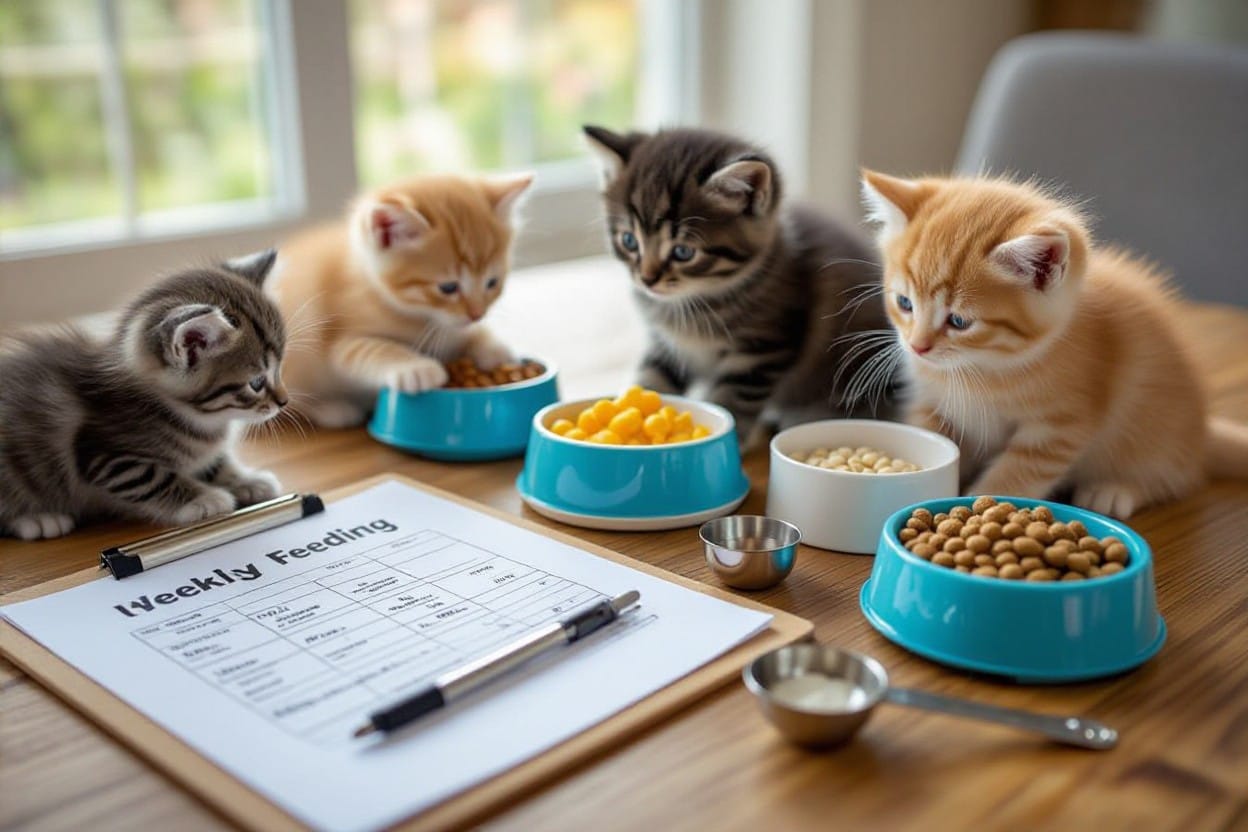
Common Myths about Kitten Feeding
Debunking Popular Misconceptions
One persistent myth is that cow’s milk or “people milk” is an acceptable substitute for a kitten milk replacer; feeding cow’s milk commonly causes osmotic diarrhea and can lead to severe dehydration in kittens under 6 weeks. You should use a commercial kitten milk replacer and follow a kitten milk replacer schedule—newborns typically need feeding every 2–3 hours, while by 4 weeks you’re shifting toward small, frequent gruel meals and bottle supplementation.
Another misconception is that free-feeding dry kitten food accelerates growth appropriately. Scheduled meals let you monitor intake and weight gain: many healthy neonates gain roughly 10–15 g per day and you can detect failure to thrive quickly when you measure weight daily. For weaning kittens timeline planning, offer wet-food gruel 4–6 times per day at 4 weeks rather than leaving food out all day.
Understanding Scientific Evidence
Controlled studies are limited, but veterinary growth charts and shelter reports consistently show that routine feedings reduce episodes of hypoglycemia and improve survival in the first month. Research-backed guidance from vets and shelter medicine emphasizes the kitten feeding schedule by age—newborns every 2–3 hours, 2–4 week olds moving to 3–4 hour intervals, and 4-week olds starting 4–6 small meals per day—as the safest approach to steady weight gain.
Physiological data explain why: neonates have tiny stomachs and high metabolic rates, so frequent small feeds are necessary to maintain blood glucose and hydration. You should track weight daily during the first 2–4 weeks; if your kitten isn’t gaining ~10–15 g/day, increase feeding frequency or volume per the product’s guidelines and consult your veterinarian.
Specific measurements matter: for example, many milk replacer manufacturers give dosing by weight (ml per 100 g body weight per 24 hours) and you should follow those tables rather than guessing amounts—this is how you apply kitten feeding amounts by weight safely.
Promoting Best Practices
Follow the kitten feeding schedule by age you’ve been using: newborn formula every 2–3 hours, begin offering gruel and reduce bottle feeds around 4 weeks (how often feed 4 week old kitten: 4–6 small meals of gruel with 2–3 supplemental bottle feeds), and transition to 3–4 meals/day by 8 weeks. Use a digital scale to log weight daily for the first month, then every few days until six months, so you can adjust portions precisely.
Hygiene and technique also change outcomes: warm formula to body temperature, sterilize nipples and bowls, and pace feedings to avoid aspiration. Structured feeding supports socialization and litter training, and consistent portions based on kitten feeding amounts by weight reduce obesity risk later on.
When you doubt a recommendation—whether about frequency, volume, or when to stop bottle feeding—consult a veterinarian and present your kitten’s weight trend; evidence-based adjustments drive better survival and long-term health than myths or guesswork.
To wrap up
Hence you should follow a clear kitten feeding schedule by age that moves from frequent kitten milk replacer schedule feedings to measured, solid meals as kittens progress through the weaning kittens timeline. For neonates and very young kittens, when to feed kittens is every 2–4 hours using a proper kitten milk replacer schedule and bottle technique; by about 4 weeks you’ll introduce gruel and follow guidance on how often feed 4 week old kitten (typically every 4–6 hours) while monitoring kitten feeding amounts by weight according to manufacturer or veterinary recommendations.
As your kittens grow you’ll lengthen intervals and offer portioned meals aligned with the kitten feeding schedule by age and when to feed kittens at each stage; consistent tracking of weight, hydration, and stool quality will tell you if adjustments to kitten feeding amounts by weight or the weaning kittens timeline are needed. If you notice poor weight gain, lethargy, or feeding difficulties, consult your veterinarian for tailored advice and support.
FAQ
Q: What is a kitten feeding schedule by age — week-by-week guide?
A: A practical kitten feeding schedule by age is: 0–2 weeks: bottle or syringe-fed kitten milk replacer every 2–3 hours, around the clock; 2–3 weeks: every 3–4 hours, begin encouraging rooting and assisted litter-box use; 3–4 weeks: introduce a thin gruel (kitten milk replacer mixed with canned kitten food) while continuing formula every 4–6 hours; 4–6 weeks: increase gruel and offer canned food multiple times daily, reduce formula to twice daily as acceptance of solids grows; 6–8 weeks: most kittens are eating wet food independently 3–4 times per day and formula is phased out; 8+ weeks: transition to a kitten diet with 3 meals per day or free-choice if recommended by your vet. For when to feed kittens, follow these frequency guidelines and base timing on the kitten’s age, appetite and weight, adjusting as they move through the weaning kittens timeline.
Q: How should I follow a kitten milk replacer schedule and transition during the weaning kittens timeline?
A: Use a kitten milk replacer schedule that matches age and weight: newborns need very frequent small feeds (every 2–3 hours), young infants every 3–4 hours, and by 4 weeks feeds drop to every 4–6 hours as gruel is added. Warm replacer to body temperature, feed with an appropriate kitten bottle or syringe, and burp and stimulate elimination for very young kittens. Start mixing replacer with canned kitten food at 3–4 weeks to form a gruel; over 2–4 weeks increase solids and decrease replacer feedings following the weaning kittens timeline so the kitten is eating primarily canned food by 6–8 weeks and fully weaned by 8–10 weeks in most cases. Track weight daily during this transition and adjust volumes and frequency if weight gain stalls or stools change.
Q: What are kitten feeding amounts by weight and how often should I feed specific ages (for example, how often feed 4 week old kitten)?
A: Exact volumes depend on the milk replacer product and kitten weight, so use the manufacturer’s feeding chart as your primary guide. General approach: weigh the kitten daily and follow the product chart to calculate total daily replacer volume, then divide by the number of feeds. As a practical timing example, newborns feed every 2–3 hours, 2–3 week olds every 3–4 hours, and a typical guideline for how often feed 4 week old kitten is every 4–6 hours while offering gruel and small wet-food meals between formula feedings. For older kittens shift to 3–4 meals per day of wet (and gradually dry) kitten food. If you need a quick check: weigh, consult the replacer label for ml per day for that weight, divide by feeds; adjust upward for poor gain or downward for loose stool and consult your veterinarian for precise volumes tailored to weight and health.
